Written 29 October
I want to start this blog off with a prefatory note. I have always intended this to be a travel blog as well as a Peace Corps experience. I figure, we work hard, we gotta play hard too, right? But, I have to ask a question: Are Peace Corps volunteers, when in their region, ever really on vacation? I will try to answer that at the end of my next blog, le blog qui concerne le Togo.
So, West African travel is bad. Let’s just leave it at that. We get on a bus around 7 o’clock, all of us with questionable seats, I don’t think we could consider a single one comfortable. Well, the 7 of us, before we know it, are on the side of the road, about 10 minutes out of Ouaga. Our bus had already broken down. We waited roughly 4 hours for a new bus to show up at which point we go back on and started the long haul to Cotonou, Benin, what I have heard is a 24 hour trip. We don’t stop till we get to the border, I’m guessing a trip south from Fada-N’Gourma 3 hours. We finally cross the Pendjari River, the border area where there is a nice national park. Benin becomes greener and greener. Then, we break down again for another hour and a half roughly. We get back on the bus and travel another few hours, at night now, to Natintingou. We stop and eat. Wow, they have cheese (street cheese, at that) in Benin! “I’m gonna love it here,” I said to myself. Then, we get back on the bus. We finally come to a rest in Penessoulou, Benin. It is about 11 pm. The driver says we are going to sleep here. Oh, jeez, all my luggage is racked on the top of this thing. What am I going to do? It’s cold as heck out here!
After trying to sleep in the sand, getting eaten by mosquitoes in the process, I decide to try the concrete under the bus. You ask why I didn’t stay in the bus? Ever sat in the back seat of a bus with 4 other people when the seat was made for 4 people for, eh, roughly 10 hours? Yeah, it was like that. Well, the pavement was warmer. But, a strange noise was beckoning from the north along the road. “ Is that the muezzin? I know it is the month of Ramadan right now, I guess it wouldn’t surprise me,” I said. Sure enough, the muezzin was belting out the call to prayer with a bullhorn… at 2:00 in the morning! Where am I? Shortly after that, the driver had had enough. We got on the bus and took back off. Slowly, sunlight graced us with her presence, sending glowing yellows over the wonderful hills and low rock escarpments that make up Northen Benin. So many papaya and mango trees. Nimes all around, palms shooting up with ever increasing frequency, pineapple and banana grows all along the road. A lack of donkeys also. Where were the black sachets that Burkina is famous for? Did I mention electricity in the upper reaches of the country, at least along the main thoroughfare. We finally get to about halfway down in the country at my estimate. It must be around 5 am. The road gets bad, really bad. We get into Abomey-Calavi, the road is a shambles. No bicycles, tons of motos, lots of people wearing complets. A great number of the motorcycle drivers are wearing yellow or orange shirts. A frenzy of people outside the university, students gathering at the admin buidling, looks like they are about to start classes.
We finally get into Cotonou. The place is crazy. I see no bikes, just organized chaos, a plethora of taxis and motos jockeying for position, the colorful complets abound. The air has a stale, smoggy garbage strewn weight to it. We get to the gare. It’s about 1 pm, meaning the trip took 30 hours. We find a hotel and crash. I come to find, right away, that the Beninois are a very helping, very friendly people. We all want to get out of Cotonou. So the next day, we head to Ganvié, the stilt village on Lake Nokoué. On the way there, we learn about the zemi-johns, the moto-taxis that are everywhere. That explains the yellow and orange jerseys these guys wear. The smog again overwhelms us. We wonder why there aren’t more bikes. Well, who would want to ride a bike where you were sure to get killed by a moto or taxi?! We went through an intersection where I didn’t see any kind of traffic control, just drivers eyeballing one another, wondering if they should take the plunge. We get out to the landing and hop a pirogue (a dug out canoe made for about 11 people). We take a tour of the village, everything on stilts. It was very neat. Our guide tells us that part of the reason the people built their village out here was to avoid the Dahomeyan Empire, the slave trading, war mongering regime that kept a capital in Abomey, just north of Ganvie about 40 miles. They couldn’t capture those sharp oarsmen and women out in their environment. And you should’ve seen it, the little 4 year olds in their 4 person dugout, in the rudder, wheeling those things around like it was nothing. Really fun to watch. However…
…the place was a tourist trap. You couldn’t take a picture of anyone unless you paid. So, we were careful, taking building shots, shots of ourselves, etc. When we did venture to take a picture, we made sure there was no one watching or their backs were turned. A few people got some cool pictures of a market on the water, consisting of canoes only, people peddling their tomatoes, okra, and onions from the water, like little produce islands bobbing up and down in the questionable looking water. The lodge was also a joke. While relaxing on the deck of the stilt hotel, people of all age would come up to us. Cadeau, cadeau, argent, argent. It was sickening. The people were so used to tourists and so dependent. I hated that part. Another thing was funny. When we found out how much it cost for rice or cous cous with sauce, we almost soiled ourselves. 3500 francs! What, it costs 5000 francs for a room! Hey, in village I get riz sauce for 200 francs! I ain’t payin’ that! So, we searched all around for food. We bought bread at the water market and got some other food (with a good and spicy sauce!) for 1000 francs and shared it. A few Africans were amazed that we were eating with our hands, slopping the sauce on our shirts, being well integrated. Well, we sure as hell were not paying 3500 francs for a meal we get in village for 200 francs! This is where the whole ‘Are you really ever on vacation when you are a Peace Corps volunteer?’ question comes from. The woman who made the food was pissed we never ordered anything. Her evil eyed looks told us to stay away.
So, after a single night on the lake in that tourist trap, we left and headed out for the old capital of the Dahomey Empire, Abomey. There, we expected to find cool palace ruins, like the West Africa Lonely Planet advertised. Abomey is a UNESCO World Heritage site after all. Well, it was a disappointment. That being said, just the ruins were a disappointment. I found the Beninois in Abomey to be extremely pleasant and helpful. That’s also where I learned a new “White Person” song:
Yovo, Yovo, Bon Soir
Ça Va Bien, Merci
All the little kids are saying it. I like it more than the
Le Blanc/Toubakou/Nasara
Il n’y a pas de cadeau?
that all whites get in Dori, a shit hole of a town in Northeastern Burkina. But yeah, we hit up a museum that was neat, got to see the throne that sits on human skulls, learned about how the Dahomey kings would parley with the Germans, Dutch, and Portuguese. They mainly sold slaves to the Portuguese, but slaves ended up from Hispaniola to Brazil, the so-called sugar colonies. Those Dahomeyans, they were somewhat of a blood thirsty bunch. They employed powerful Amazons, you know, the women warrior badasses, built short stunted walls with humain remains, the kings siring hundreds of children with thousands of women, purportedly. Yeah, everybody who buried a king had to die too, only like three people in the whole empire knew the location of royal graves. Glad I wasn’t an indigenous anywhere near where they were pillaging villages for slaves!
After two nights in Abomey (which also had a great marché), we cut for Grand Popo, a small beachside village lying about 40 km from the Togolais border. Beautiful, nestled close to a river with a steep beach, on the Bight of Benin, Slave Coast, Grand Popo was a cool spot. Nice people, beautiful palms, cool, small marché on the river. We stayed at a place called The Lion Bar, a reggae inspired hotel nestled amongst the coconut palms. Paintings of a lion, Haile Selassie, Bob Marley, and Peter Tosh dominated the, of course, green, gold, and red façade of the buidling. They had some reggea phrases translated into French that didn’t really flow from the English that well. But we all know we lose something in the translation, either way we go. The food was good, the people were nice, the drinks were good. They made a drink called a Coco Zion. First, they had to climb a palm and cut a fresh coconut then cram a ton of rum into it with some pineapple juice before they gave it to you with extra coconut milk on the side. Yeah, it was good. But a little short of paradise. The break wasn’t as kind as Ghana. I didn’t want to take a full out swim in the water, it was just too mean. I am not gonna fight a riptide like that for anybody. Second, the beach was so steep. Not much frisbee throwing went on. Then, David and I got hit so hard by bed bugs, my God. I must’ve gotten bit about 100 times on both my ankles/feet! It was terrible.
While we were there, we went to Ouidah, which is called the present day capital of voodoo. We didn’t see much voodoo stuff though. Traveling on a Peace Corps wage is difficult to say the least. We checked out the old Portuguese slave fort that had been converted into a museum, then did the Path of the Slaves. This is the historic route where the slaves took their walk from the fort to the beach along a sandy path. Statues commemorated the journey along the way, with everything from a few Amazon statues to a serpent eating it’s tail to symbolize the continuity of the Dahomey Empire. We got to the beach where a large ceremonial gate had been erected. The Point of No Return the portal is called. It has a relief of slaves in chains, being pulled out onto lighters that take them to the moored slavers (the big ships) that would take them on the long haul to the Americas. An eerie strip of beach, wicked, black and grey clouds floating in the back, gesturing to me a little, “Be ever thankful this wasn’t you.”
After Ouidah, we spent two more days in Grand Popo, then we hit up Togo. I did like Benin, but it was too touristy. That goes with experience and pricing. The voodoo stuff was so prohibitively priced. My brother’s a pilot. I wanted to buy him a fetish for good luck. You never know when it might come in handy. Well, when they cost a little over a hundred dollars for a small trinket, you have to decline. Ouidah was definitely cool, Abomey was a cool town too. The ruins were a disappointment, but hey, not all ruins are like Chichen Itza and Tikal (big up Guatemala and Mexico!). The food, good and spicy, with good cheese, a great change to the boringness of Burkinabé food. But the people: great. The Beninois are pleasant and helpful, just like most West Africans. But hey, still got to deal with the people from Togo, the next episode…
Big Up from Aribinda
Friday, October 31, 2008
Subscribe to:
Post Comments (Atom)
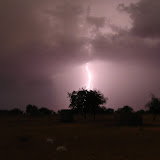
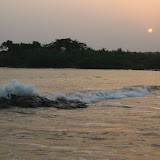

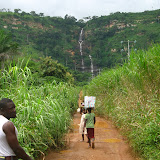


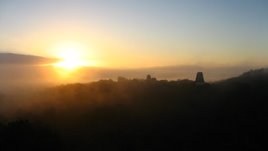
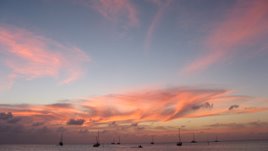

1 comment:
nice job
Bathmate
Post a Comment